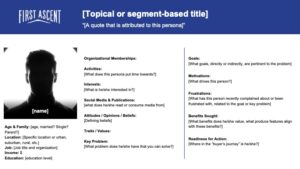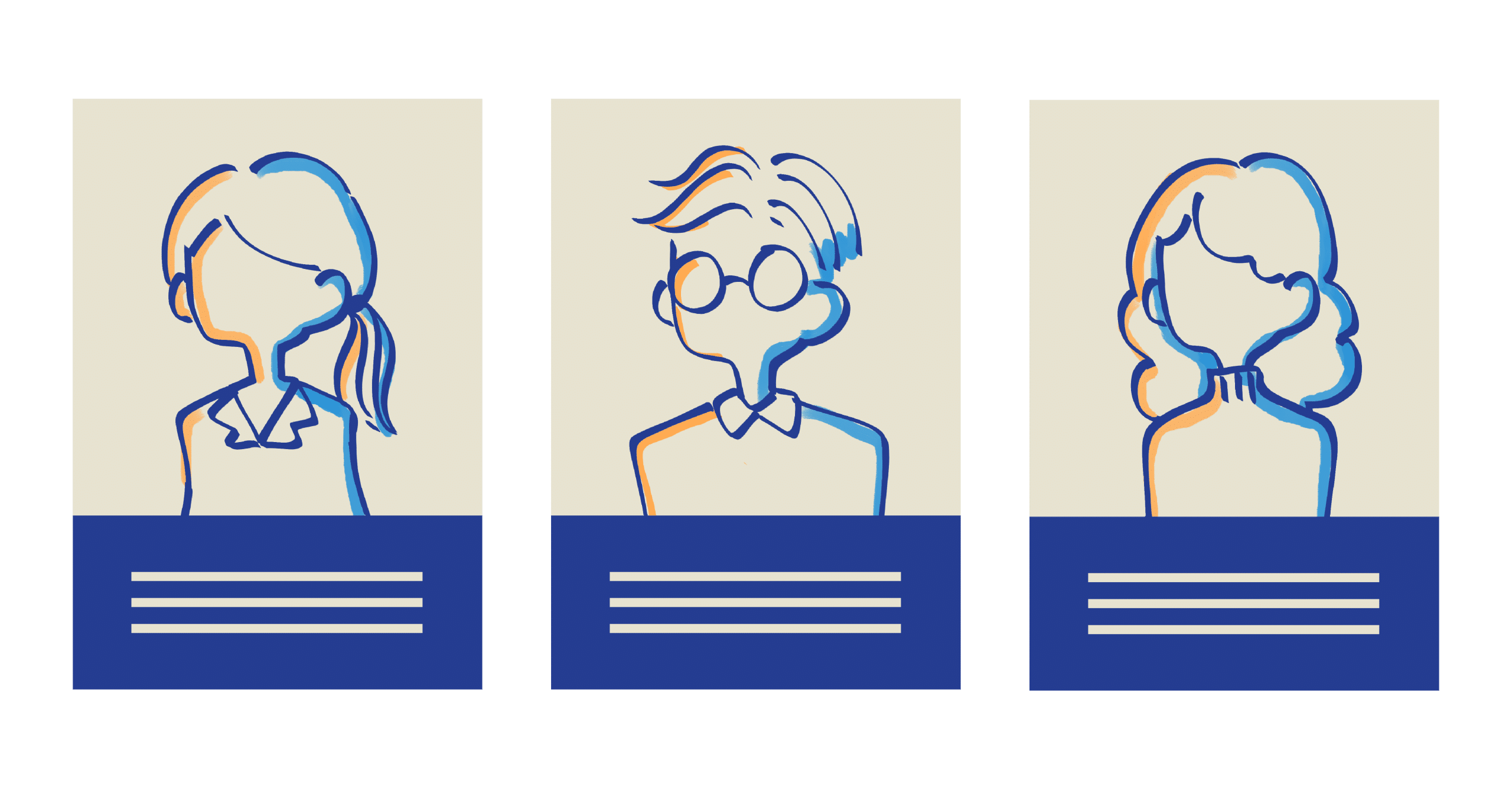Customer personas help brands interact with their customers effectively. In a marketing study by the Edelman Group, 51% of respondents expressed frustration with several brands’ efforts in understanding their needs. In a separate survey by Reponsys, they found that 34% of the respondents were turned off by the brand they use because of the bothersome and irrelevant marketing messages that they receive.
Some companies lose business because customers don’t feel a personal connection to the brand despite the product or service being useful. This can be avoided if businesses put in the effort to know their customers well and how to best communicate with them. Through customer personas, brands can establish a strong foundation on which to build their branding, offerings, marketing efforts, and customer service.
A vital part of why customer personas are effective is the human tendency to be empathetic. A specific representation of a person, for example, “a 32-year-old single woman looking for quality clothing that is comfortable and meets her budget”, is more relatable than a general target audience portrayal saying, “millennial women”. Although customer personas represent a broad audience, the detailed characterization makes it easier to understand and cater to them. Because they are specific, personas can guide a brand’s copywriting, design choices, and other marketing efforts that resonate with the target audience.
Advantages of Having a Customer Persona
Having vast options can be great but not necessarily when it comes to your target market. Being too open can make your marketing ineffective because it seems all over the place and not targeted to a specific audience. Without customer personas, it’s hard to know exactly who that audience is. Knowing how to talk to customers, what appeals to them, and where to find them is important. Here are a few advantages to having customer personas:
Stronger branding
No matter how creative your logo, slogan, or piece of content may be, it doesn’t matter if the audience is not interested. Identifying your target audience first is essential when developing the right visuals, tone, and other elements of your brand. You need to know what will resonate with them, not just what you think looks or sounds best. Personas can help you do that.
Motivated audience
When you create messages without customer personas in mind, they are likely to be too broad and unsuccessful. Your audience won’t be stirred into action when they read your message unless it focuses on the specific details that they care about. Having customer personas helps to shape language that will move the right audience.
Customer loyalty
Customer personas help you build a brand that your target market can trust, making it easier to establish customer loyalty. By understanding your target audience, you can create content that resonates with them and helps them to identify with your brand. As you continue to serve your audience’s needs, you will start to build a strong relationship with them.
Opportunities to improve offerings
How can you make a product or service better when there is no base to support it? When you don’t know who your customers are, there is no way to know what their needs and preferences are. Their identity lays the groundwork for improving your existing offerings and creating new ones.

What exactly is a customer persona?
You can think of customer personas as a composite sketch of your customer. Factor in the lifestyle of this person, their job, age, marital status, location, interests, needs, wants, and frustrations. This will help you visualize who your customer is. With this profile, you can determine the marketing efforts that work best for the collective identity of your target audience.
How to create an effective customer persona
Customer personas are only helpful if you know how to create and use them effectively. When developed and utilized properly, customer personas pave the way for better user experiences, persuasive copywriting, and good pricing.
The number of customer personas needed for every brand varies. It depends on the unique purpose each ideal customer has for your organization. For example, a nonprofit that aims to interact with donors, recipients, and shoppers needs to create a customer persona for each role and thus needs to create three personas. A shop on the other hand, may only need one customer persona for its ideal shopper.
Start with a template
Customer personas vary from organization to organization. Generally they entail descriptions that portray your target audience, which can include their occupation, industry, company size, pain points, goals, buying process, and other relevant information to your brand.

Need a template? Download ours!
Gather data
A huge mistake in creating customer personas is leaving the identity of the customer to the imagination. Don’t do guesswork; collect information based on actual data. Look to the following sources for data:
Feedback and customer support tickets: This data is often most easily accessible. Review both the positive and negative feedback that people have sent you.
Talk to your sales or customer service team: They are the ones who have firsthand experience with your customers. Discuss their customer interactions and observations.
Customer surveys: Send out surveys to your customers regarding their needs, motivations in purchasing, and frustrations.
Website analytics: Review the data compiled about your website visitors. Through Google Analytics, you can look at your visitors’ locations, devices, and what pages they are most interested in.
Social listening: Listen to what consumers are saying about your organization or industry online. Look at their comments and feedback on social media platforms, including those of your competitors.
Social media analytics: Using each platform’s built-in analytics or through a paid analytics tool, you can see a variety of metrics such as audience growth, engagement, reach, impressions, or clicks. This data may be helpful in crafting the psychographic information for your customer personas. If you see that a certain type of content you share on social media is consistently getting more engagement than other types of posts, then that topic is most likely something that your target audience is interested in. For example, if you are a school and see that posts about clubs and sports are consistently receiving the most likes, comments, and clicks from parents, then you may want to include “after school activities” as an interest in your parent persona.
Define your target audience
Now that you have all the information you need to get started, it’s time to narrow down who your real potential customers are. It might be tempting to classify them into groups based on the data you gathered, but it is more advantageous to get into the specifics of who they are. The descriptions in your customer persona should include:
Demographics: What is their age, gender, marital status, and income?
Professional details: Where do they work and in what industry?
Psychographics: What is their personality like and what innate qualities do they have?
Goals: What do they want to accomplish?
Pain points: What are their frustrations?
Benefits: How will your product or service solve their concerns?
Influences: What media makes an impression on them?
Buying process: How do they make purchasing decisions?
Consider other personas
While the focus is to find and cater to the people who will most likely be consistent customers, you should take into consideration the other personas that may exist. This process can help you focus even more on who you really want to talk, appeal, or sell to.
Detractors: These are people who fit the persona that you built but have characteristics other than the descriptions that you made. While a part of them fits into your target audience, another part of them isn’t the right fit for your market.
Influencers/partners: These are people who make sales indirectly by influencing others to make a purchase. For example, a personal trainer may recommend a brand of shoes to gym members.
Anti-personas: These are people who are not likely to make a purchase. For example, if your products or services are designed for women, then men are less likely to buy unless there’s a unique reason.
Creating customer personas takes time. You don’t want to make rough sketches of who your customers are based on light observations and insufficient data. Your customer personas should demonstrate real people with real concerns, desires, and motivations.
Over time, you’ll gather more data on who your customers are and update your customer personas to reflect those new insights. Try developing your personas as early as possible so you can keep finding room to grow, serve your customers better, and find success in your business.
